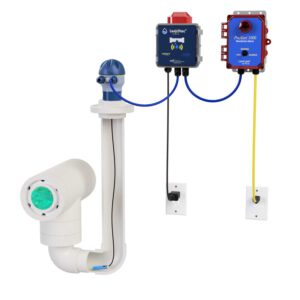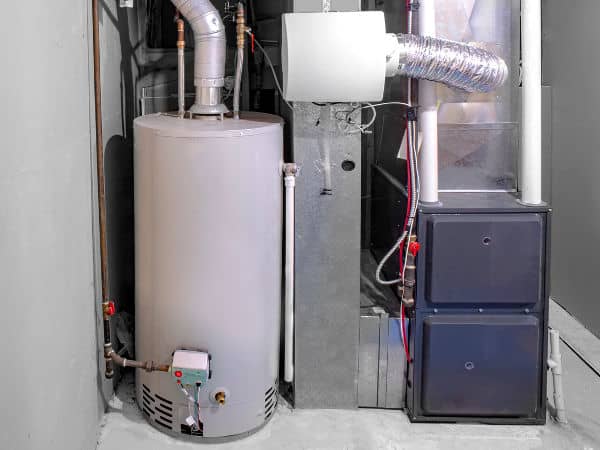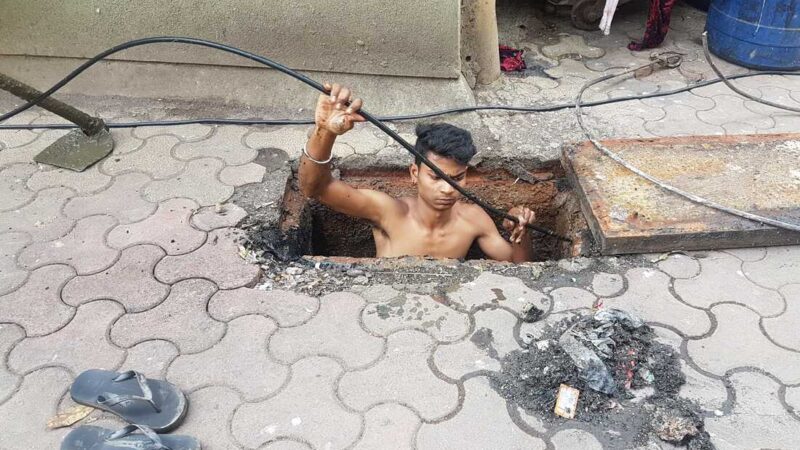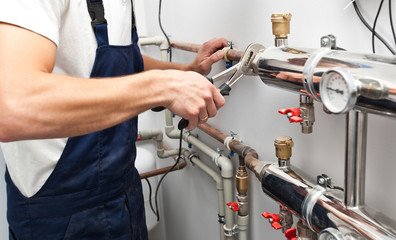The Benefits of Leak Detection
Plumbing leaks are one of the most common causes of water damage in homes. They can also lead to high water bills and expensive repair costs.
If you suspect you have a leak, start by checking your water meter and noting the numbers. Then wait an hour and check again. If the numbers have gone up, you likely have a leak. For professional help, contact Clearwater FL Plumber.
Leak detection equipment alerts homeowners or business operators of abnormal water conditions, such as a constant flow of water from a faucet that has not been turned on. When this equipment detects a leak, it shuts off the water to the entire house by closing a valve within the unit. This can prevent a faulty toilet flapper, a tub that has been left running, or other plumbing issues from causing expensive and disastrous damage.
Water leak detection systems work in several ways, including using sound waves to identify water patterns and flow in the pipes. This information is transmitted to the system and used to identify any potential leaks. Another common method is to use an electronic sensor that emits a radio signal to determine whether there is water present in the pipeline. This type of sensor is typically installed at the main water pipe in a home or business. The system will then monitor water usage and send the results to the homeowner or operator.
Detecting a leak in the pipeline is a complex process that requires specialized knowledge and advanced equipment. The methods for detecting a leak range from simple volume balance “meter out” versus “meter in” systems to complex computational monitoring systems that simultaneously monitor multiple operating conditions. The selection of a particular detection method depends on the length and complexity of the pipeline, the nature of its operation, the environment in which it operates, and the characteristics of the product being transported.
In addition to the various methods for detecting leaks, other methods for measuring and managing pipeline integrity include hydrostatic pressure testing, video inspections of the structure’s underground piping, and infrared open-path gas detectors. Infrared open-path gas detectors measure the emitted infrared energy from a light source and the absorption of that energy by the surrounding air to identify the concentration of gas present in a pipeline.
Often, a concealed plumbing leak is difficult to locate and can result in costly damage to the property. However, with the right tools and training, plumbers can easily detect and repair these problems. These technologies help reduce waste, lower water bills, and prevent property loss from water-related issues.
Pinhole Leaks
Copper water pipes are prone to pinhole leaks that can be difficult or impossible to find. These small leaks are often the result of a process called pitting corrosion, which creates holes in the copper. The corrosion can be caused by various things, like a hard water supply, minerals in the water, or even the type of metal your pipes are made from.
Copper pipe corrosion can cause a number of problems, including water stains on walls and ceilings, softened drywall, a bubble in your paint, wet areas on the floor or carpeting, and even warping in hardwood floors. The best way to detect these problems is to turn off your water and check the water meter. If the meter continues to move, you likely have a leak somewhere in your house.
Another common problem that can be caused by copper pipes is the development of mold and mildew. This is because these leaks are often undetected inside the walls and can provide the perfect environment for the growth of these organisms. If you notice unexplained dripping sounds or see a brown, green, or blue discoloration on your copper pipes, it’s time to call a plumber for an inspection.
These copper pipe problems are usually the result of a process known as “pitting corrosion.” This is caused by a combination of factors that wear away the copper’s inner lining. The most common factor is the presence of hard water, which can cause mineral buildup and abrasions in your pipes. When these minerals are pushed under high pressure, they can eat through copper’s protective oxide layer.
This leaves the copper pipe vulnerable to a tiny hole that eventually leads to a full-blown leak. While there are a variety of temporary solutions, the most permanent is to get your copper pipes replaced with an appropriate alternative like PEX.
A full plumbing inspection is the only way to ensure that you aren’t dealing with hidden problems like pinhole leaks. While there are a lot of DIY options out there for these kinds of leaks, many of them don’t work very well or can introduce contaminants into your home’s water.
Leak Detection Equipment
There are several different types of leak detection equipment available on the market. Some of these devices use biological methods (such as trained dogs) to help locate leaks or other anomalies within a pipeline. Others use hardware sensors or other monitoring systems to detect changes in pressure, temperature, or flow rate that might indicate the presence of a leak. Finally, there are software-based methods that use computer programs to monitor data from sensor arrays and help identify the location of a leak.
Many water leak detectors, work by monitoring the pattern of water flow through pipes. If a change in this pattern is detected, the system shuts off the water flow to the entire home using a valve inside the unit. This helps to protect your home from costly and inconvenient damage from water leaks.
These devices work best when installed at the point of entry for water into your home or building. This means that they should be located downstream of all your household appliances and before the water filtration system. This way, any problems with your filtration system or other water-using devices will be detected before they have a chance to cause serious and expensive damage.
Leak detection technology is also available for use in industrial settings where flammable or combustible liquids are stored. These devices can be used to detect water, fuel, or other liquids and are ideal for locating leaks in tanks or other large containers. They are often designed to be highly rugged and can be used in a variety of weather conditions.
The Echologics acoustic leak detection system can be installed on distribution and transmission mains and is capable of identifying extremely faint acoustic noises emitted by leaking water in a pipeline. This technology helps utilities and other companies identify the locations of leaks on their distribution systems, allowing them to prioritize repairs and allocate resources accordingly. It can be used on various pipe materials, including steel, cast iron, and ductile iron pipes.
Cost
If you’re a homeowner or property manager, investing in a smart leak detection system can be a smart way to prevent costly water damage. A smart system that monitors the condition of your assets can send you an alert when a problem occurs, and many also include a built-in siren that can be heard from the device itself or remotely. Some even connect to the Internet of Things and can communicate with your home or mobile devices.
In terms of detecting water leaks, most systems will identify an area of potential trouble by measuring the amount of water flow in a given time frame. This information can then be used to locate the source of a leak. A skilled professional can then be hired to repair the leak in a timely manner.
Water leaks are not only expensive for homeowners but also for businesses. According to EPA estimates, leaks waste 90 gallons of water each day and contribute to about 10 percent of residential water bills. Detecting and repairing these leaks will not only save water but also reduce your utility bill.
The cost of a leak detection service can vary depending on the type of detection equipment and how difficult it is to find the source of the leak. The cost of the service will also rise if a general contractor needs to be hired for any repairs or restoration. However, if you work with the same company that performs the detection service, you’ll be able to save money in the long run.
Pipeline leak detection can be a complex and time-consuming task, especially when the pipes are underground and cannot be easily seen. Leaks are caused by a variety of factors, including corrosion and wear, aging infrastructure, ground movement, and more. Regardless of the cause, all leaks should be detected and repaired promptly to minimize damage and ensure continued water supply.
In addition to environmental protection, pipeline leaks can be costly for companies in the form of lost profits. Each leak allows profitable materials to escape, which can impact a company’s bottom line. With the help of automated systems, these losses can be significantly reduced or eliminated.





